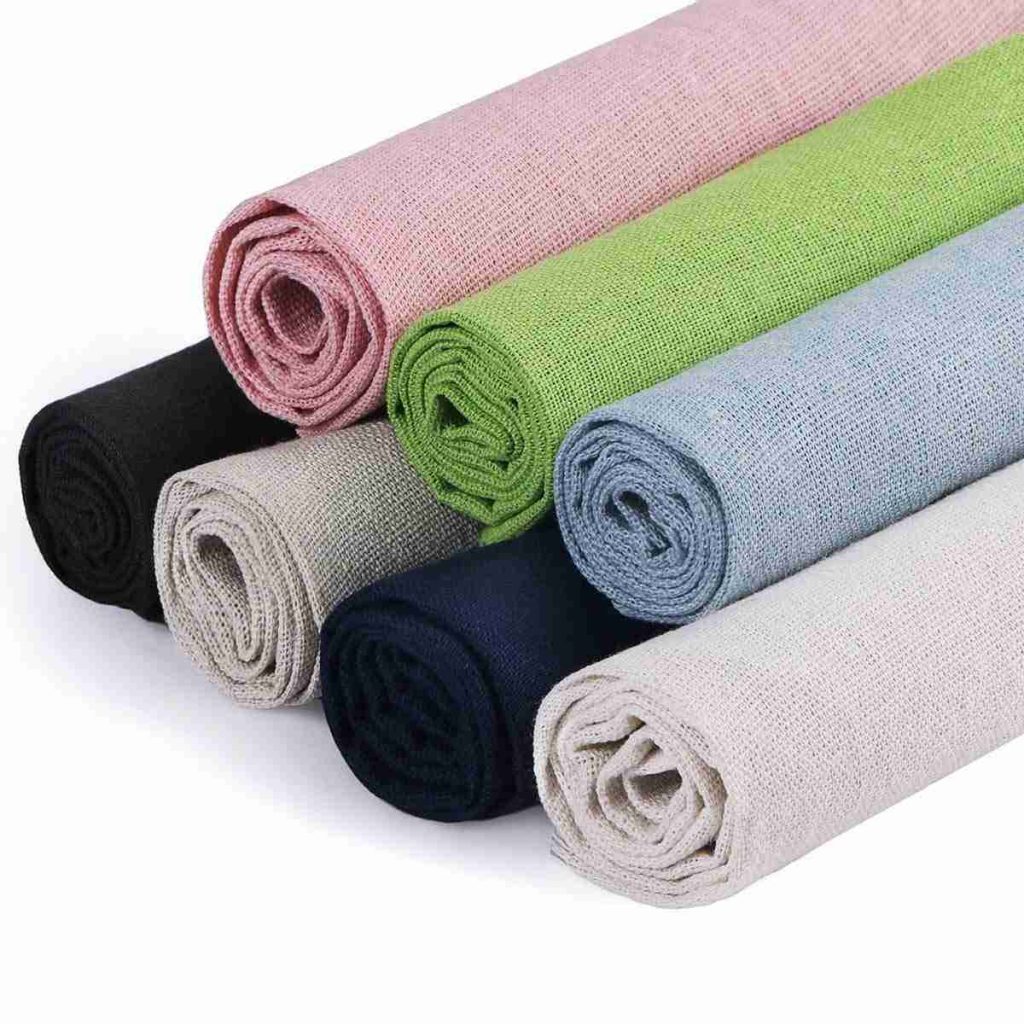
Linen is a type of fabric that occurs naturally and is obtained from the fibrous stems of the flax plant. It has been used as clothing for thousands of years and is well-known for the unique properties that set it apart from other fabrics. This article will cover the characteristics and variations of linen fabric, as well as its advantages.
Qualities of Linen Fabric
Linen fabric boasts several unique attributes that distinguish it from other fabrics. Here are some of its most useful properties:
Almost zero fluff or lint
Linen fabric comes with almost zero fluff or lint. Depending on the weave, linen fabric can be either textured or smooth, yet consistently free of fluff. This feature makes it versatile and suitable for various applications. For example, it is often used in facemasks and is effective during pandemic situations.
Linen also outperforms other fabrics when drying items like glass, as lint can be very unpleasant. Furthermore, linen fabric is frequently utilized in the kitchen, where it can aid in the treatment of injuries and allergic reactions. Before the availability of disposal alternatives, linen bandages were the standard.
Antibacterial
Most types of linen fabric possess some level of antibacterial properties and have demonstrated 30-55% effectiveness in combating staphylococcus bacteria. Bacteria are responsible for unpleasant odors and can degrade other fabrics, but linen cloth remains durable and odor-free over time.
In contrast to the frequent use of antibacterial cleaning agents in the kitchen, linen fabric naturally harbors fewer bacteria, which is reassuring for hygiene-conscious individuals. It also withstands sterilization through boiling – simply submerge the fabric in simmering water for around 10 minutes using a wooden spoon.
Overall, linen fabric is a practical and reliable option for those seeking a long-lasting and hygienic textile solution.
Thermoregulating
Linen fabric is excellent at wicking away moisture and preventing a clammy sensation, ensuring that both the fabric and the wearer remain dry. While other materials may possess similar properties, linen is particularly adept in this regard. This is especially important when it comes to face masks – no one wants a damp, uncomfortable mask against their skin, but linen dries quickly in the open air.
Linen fabric is highly absorbent and doesn’t hold onto moisture, making it an ideal choice for humid climates. It keeps your skin feeling comfortable by resisting moisture, and is also versatile in varying weather conditions.
For instance, if it’s chilly outside, linen fabric keeps you warm, but if it’s hot, it regulates your body temperature and prevents overheating. Experience a tranquil and restful night’s sleep with linen clothing.
Whether you are sleeping in an air-conditioned room at night or not, linen keeps you warm and prevents you from facing a cold or cough, allowing you to sleep soundly.
Hypoallergenic
Linen is also ideal for people with delicate or sensitive skin. It has no allergic effect and is found to be the best alternative for mattresses and bedding for asthmatics, as it is completely hypoallergenic and fluff-free. Additionally, linen fabric’s thermoregulatory qualities can be advantageous for individuals with asthma.
Long-lasting and machine washable.
Linen fibers exhibit increased strength when wet. This means that linen fabric can be machine washed, and it is less likely to be damaged when washed in a machine than other fabrics. Flax fibers, the material from which linen is made, are sturdier when they are wet. Linen fabric is woven in a moist environment to boost the yarn’s strength.
Types of Linen Fabric
Damask Linen
Damask linen is a delicate and ornate type of linen fabric that is created on a jacquard loom. As a result, the fabric has a textured surface that resembles embroidery, which makes it a popular choice for decorative items like tablecloths and napkins. However, it is also suitable for everyday use due to its durability.
Plain Woven Linen
Plain woven linen fabric is the most common type of linen fabric used in everyday items such as hand towels, cotton towels, and dish towels. Linen fabric has a loose weave that contributes to its exceptional durability and resistance to tearing. Despite its durability, plain woven linen fabric remains soft and comfortable to the touch.
Loosely woven Linen
Loosely woven linen fabric is highly absorbent but less durable than other types of linen fabric. It is commonly used in applications where absorbency is essential, such as making diapers and sanitary napkins. Loosely woven linen fabric is also used in some types of clothing, but it requires careful handling to prevent tearing.
Sheeting Linen
Sheeting linen fabric is the most commonly used type of linen fabric in clothing. It has a soft surface and a close weave that makes it untextured. Sheeting linen fabric has a higher thread count than any other type of linen fabric, which makes it durable and resistant to tearing. It is also highly breathable, making it ideal for use in warmer weather.
Conclusion
For thousands of years, linen fabric has been a versatile and durable material with a wide range of applications. Its distinctive qualities make it well-suited for everything from clothing to bedding to decorative items. Linen fabric is highly breathable, hypoallergenic, and easy to care for, making it an excellent choice for people with sensitive skin.
To sum up, the various types of linen fabric possess distinct qualities that make them appropriate for a variety of purposes. Whether you are looking for a delicate and ornate fabric or a highly durable material for everyday use, linen fabric is an excellent choice. The exceptional qualities and versatility of linen fabric make it an ideal material for a diverse array of applications. So, if you are in the market for high-quality linen fabric, be sure to explore the different options available online.